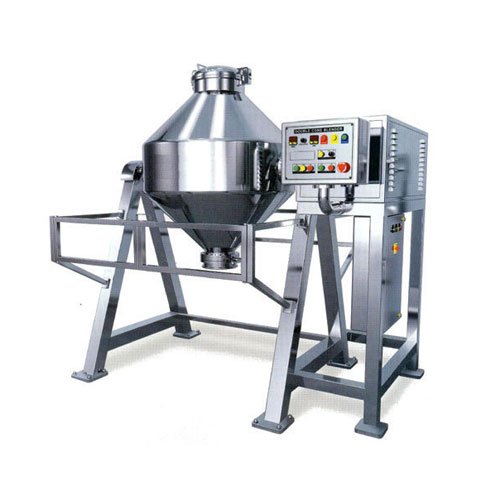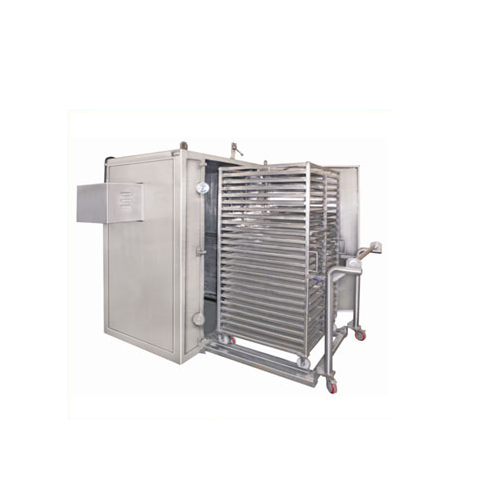What is a Fluidized Bed Dryer?
A fluidized bed dryer is an industrial dryer used to dry granular materials, powders, or particles. It operates by suspending solid particles in a bed with upward flowing air or gas, causing the particles to behave like a fluid. Heat is applied to the fluidizing medium, drying the particles as moisture evaporates. Fluidized bed dryers offer advantages such as uniform drying, gentle handling of materials, short drying time, and energy efficiency. They find applications in various industries requiring efficient drying processes.
Advantages of a Fluidized Bed Dryer
The advantages of a fluidized bed dryer include:
Uniform Drying: Fluidized bed dryers ensure even distribution of heat and airflow throughout the bed, resulting in uniform drying of the material. This helps prevent overdrying or uneven moisture content.
Gentle Handling: The fluidized state of the bed minimizes particle-to-particle contact and reduces the risk of material degradation or breakage, making it suitable for fragile or sensitive materials.
Short Drying Time: The efficient heat and mass transfer rates achieved in a fluidized bed dryer allow for rapid drying of materials, leading to shorter processing times compared to other drying methods.
Energy Efficiency: Fluidized bed dryers can achieve high thermal efficiency due to the effective use of heat and the ability to recycle and recover heat from the exhaust gases. This results in lower energy consumption and operating costs.
Adaptability: Fluidized bed dryers can accommodate a wide range of feed materials, particle sizes, and moisture contents, making them versatile for various applications across industries.
Continuous Operation: Many fluidized bed dryers can operate continuously, allowing for uninterrupted processing and increased productivity.
Controlled Environment: The fluidized bed dryer provides precise control over temperature, airflow, and residence time, allowing operators to tailor the drying process to specific material requirements and optimize drying performance.
Reduced Environmental Impact: The efficient use of energy and the ability to capture and treat exhaust gases minimize environmental emissions and contribute to sustainable manufacturing practices.
Applications of a Fluidized Bed Dryer
Fluidized bed dryers find applications across various industries due to their versatility and efficiency. Some common applications include:
Pharmaceuticals: Fluidized bed dryers are used for drying pharmaceutical powders, granules, and tablets. They offer precise temperature control and gentle handling, making them suitable for drying sensitive pharmaceutical products without degradation.
Food Processing: In the food industry, fluidized bed dryers are employed for drying fruits, vegetables, grains, herbs, and spices. They help maintain product quality by ensuring uniform drying and preserving the nutritional content and flavor of the food products.
Chemicals: Fluidized bed dryers are utilized in chemical processing for drying various chemical compounds, catalysts, pigments, and polymers. They offer efficient drying with minimal product degradation, making them suitable for sensitive chemical materials.
Detergents and Cleaning Products: Fluidized bed dryers are used for drying detergent powders, cleaning agents, and detergent additives in the production of household and industrial cleaning products. They enable rapid drying and ensure consistent product quality.
Minerals and Mining: Fluidized bed dryers are employed in the minerals and mining industry for drying mineral ores, sand, and aggregates. They help remove moisture from raw materials, facilitating downstream processing and improving product quality.
Agriculture: In agriculture, fluidized bed dryers are used for drying seeds, grains, nuts, and agricultural products such as coffee beans and tea leaves. They aid in preserving the quality and shelf life of agricultural commodities by reducing moisture content.
Petroleum and Petrochemicals: Fluidized bed dryers are utilized in the petroleum and petrochemical industries for drying catalysts, molecular sieves, and other chemical substances used in refining and petrochemical processes.
Environmental Remediation: Fluidized bed dryers are employed in environmental remediation projects for drying contaminated soils, sludges, and industrial wastes. They help remove moisture from the materials, facilitating treatment and disposal.
These are just a few examples of the diverse applications of fluidized bed dryers across industries. Their ability to provide efficient, uniform, and gentle drying makes them indispensable in various manufacturing and processing operations.
Features of Fluid Bed Dryer
The features of a fluid bed dryer typically include:
Fluidization Chamber: This is the main chamber where the material to be dried is placed. It’s designed to facilitate the fluidization of the material through the introduction of air or gas.
Air Distribution System: Fluid bed dryers feature an air distribution system that evenly distributes the air or gas throughout the fluidization chamber. This ensures uniform drying of the material.
Air Heating System: A system for heating the air or gas used in the drying process is included in fluid bed dryers. This may involve electric heaters, steam heat exchangers, or direct combustion systems, depending on the specific design.
Control System: Fluid bed dryers are equipped with control systems that allow operators to adjust and monitor parameters such as temperature, airflow rate, and residence time. This ensures precise control over the drying process.
Exhaust System: An exhaust system is integrated into fluid bed dryers to remove moisture-laden air or gas from the drying chamber. This helps maintain the desired drying conditions and prevents the buildup of moisture.
Product Discharge Mechanism: Once the material is dried, it needs to be discharged from the dryer. Fluid bed dryers typically include mechanisms such as discharge valves or screw conveyors for efficient product discharge.
Inlet Air Filtration: To maintain cleanliness and prevent contamination of the drying material, fluid bed dryers often include inlet air filtration systems to remove particles and impurities from the incoming air or gas.
Insulation: Insulation is commonly incorporated into fluid bed dryers to minimize heat loss and improve energy efficiency. This helps maintain consistent drying temperatures and reduces operating costs.
Safety Features: Fluid bed dryers may include various safety features such as temperature sensors, pressure relief valves, and emergency stop buttons to ensure safe operation and protect against potential hazards.
Materials of Construction: Depending on the intended application and the properties of the materials being processed, fluid bed dryers may be constructed from materials such as stainless steel, carbon steel, or special alloys to withstand corrosion and wear.
These features collectively enable fluid bed dryers to efficiently and effectively dry a wide range of materials in various industrial applications while providing control, reliability, and safety.
Components of Fluidized-bed Dryer
The components of a fluidized-bed dryer typically include:
Fluidization Chamber: This is the main vessel where the material to be dried is placed. It contains the fluidized bed where the drying process occurs.
Air Distribution Plate or Grid: Located at the bottom of the fluidization chamber, the air distribution plate or grid evenly distributes the air or gas throughout the bed of material. It ensures uniform fluidization and drying.
Air Supply System: This system delivers the air or gas needed for fluidization and drying. It typically includes blowers, fans, or compressors to generate the required airflow.
Heating System: A heating system is used to heat the air or gas entering the fluidization chamber. This can include electric heaters, steam coils, or direct combustion systems.
Control System: The control system regulates various parameters of the drying process, such as temperature, airflow rate, and residence time. It ensures precise control over the drying conditions for optimal results.
Product Discharge Mechanism: Once the material is dried, it needs to be discharged from the fluidized bed. This can be achieved using discharge valves, screw conveyors, or other mechanical devices.
Exhaust System: The exhaust system removes moisture-laden air or gas from the fluidization chamber. It helps maintain the desired drying conditions and prevents the buildup of moisture.
Cyclone Separator or Bag Filter: To separate the dried material from the exhaust air or gas, a cyclone separator or bag filter is often used. This removes any fine particles entrained in the gas stream before it is discharged.
Inlet Air Filtration: An inlet air filtration system may be included to remove impurities and particles from the incoming air or gas, ensuring clean and uncontaminated drying.
Insulation: Insulation is applied to the fluidization chamber to minimize heat loss and improve energy efficiency. It helps maintain consistent drying temperatures and reduces operating costs.
These components work together to facilitate the fluidization and drying of materials in a fluidized-bed dryer, providing efficient and uniform drying for a wide range of applications.
Troubleshooting In FBD and Remedies
Troubleshooting issues in a fluidized bed dryer (FBD) involves identifying common problems and implementing appropriate remedies. Here are some typical issues and their corresponding remedies:
Uneven Drying:
Issue: Some parts of the material are dried more than others.
Remedy: Check the distribution of air or gas within the fluidization chamber. Adjust the air distribution plate/grid if necessary to ensure uniform airflow.
Increase the mixing or agitation of the material within the bed to promote uniform drying.
Material Clumping or Agglomeration:
Issue: The material forms clumps or agglomerates during drying.
Remedy: Reduce the feed rate to prevent overloading the fluidization chamber.
Adjust the airflow and temperature to ensure proper fluidization without causing excessive sticking of particles.
Add anti-agglomeration agents or de-foaming agents to the material if appropriate.
Excessive Moisture Content in the Discharged Material:
Issue: The material appears to be inadequately dried upon discharge.
Remedy: Increase the drying temperature or airflow rate to enhance moisture removal.
Extend the residence time of the material in the fluidized bed to allow for more thorough drying.
Ensure that the exhaust system is functioning properly to remove moisture-laden air effectively.
Overheating:
Issue: The temperature within the fluidization chamber exceeds the desired setpoint.
Remedy: Reduce the heating power or adjust the temperature control settings to maintain the desired temperature.
Check for any blockages in the air supply system that may be causing reduced airflow and overheating.
Inspect the insulation of the fluidization chamber and repair any damage to prevent heat loss.
Pressure Buildup or Loss of Fluidization:
Issue: The fluidization bed collapses, or there is a buildup of pressure within the chamber.
Remedy: Check for any blockages or restrictions in the air supply system and clear them if necessary.
Adjust the airflow rate to maintain proper fluidization without causing excessive pressure buildup.
Ensure that the air distribution plate/grid is clean and free from obstructions.
Excessive Dust or Fines in the Exhaust:
Issue: The exhaust contains a high concentration of fine particles or dust.
Remedy: Install a cyclone separator or bag filter in the exhaust system to capture fine particles before discharge.
Adjust the airflow velocity or install baffles to minimize particle entrainment in the exhaust gas stream.
Use finer mesh screens or filters in the inlet air filtration system to prevent the entry of particles into the fluidization chamber.
Regular maintenance and inspection of the fluidized bed dryer components are essential for preventing issues and ensuring optimal performance. Additionally, consulting the manufacturer’s guidelines and seeking professional assistance may be necessary for more complex troubleshooting situations.










Reviews
There are no reviews yet.